It's an undisputed fact that women are underrepresented in the tech industry. According to Girls Who Code, in the US:
In middle school, 74% of girls express interest in Science, Technology, Engineering and Math (STEM), but when choosing a college major, just 0.4% of high school girls select computer science.
Personally I run a Code Club with more girls among its members than boys, which means that there are plenty of girls out there with an interest in code and development. But somewhere along the way they are being discouraged, either actively or passively.
Women are hugely underrepresented in tech firms too. The big firms work hard to improve the diversity of their workforce, and companies like Apple, Google and Facebook have 30% woman among their staff. But when you look at technical jobs, this figure is different: on average less than 16% of tech jobs in the big firms are filled by women.
Even Apple, which devotes a considerable focus to diversity and is far more diverse than its competitors, is 70% male.
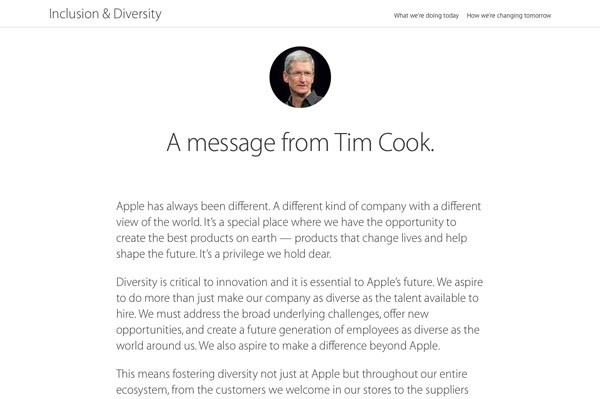
I'm not going to devote a lot of space here to arguing about the facts or statistics behind this or trying to work out exactly why women are so poorly represented as Computer Science majors or in tech jobs. Nor am I going to focus on the organisations out there that are working to improve this: Tom McFarlin has already done that in his excellent article.
Instead I want to provide a call to action for everyone out there who wants to see this change.
Having more women in the tech industry benefits all of us and the industry in general, as it provides a broader pool of talent, and all of us have a role to play in ensuring that the industry is diverse and has as wide a pool of talent as possible.
So I'm going to suggest ways in which you can help to make the tech industry more diverse and more welcoming to everyone, whether you're a CEO or a blogger, an experienced coder or someone just starting out.
Note: Diversity in the tech industry isn't just an issue in terms of gender diversity: people from other underrepresented groups arguably face even greater challenges, and those who fall into two or more groups can face the biggest barriers of all. The focus of this article however, is on gender diversity, as that's the area I have experience in.
1. Language
It's easy to fall into using language that makes women feel excluded without ever realising it's happening: I'm a woman and I've been called up on it from time to time.
Guys and Girls
There are two words which are very emotive and are used a lot in the tech industry, and they are guys and girls.
There are a wide range of opinions on whether these words are acceptable or not, and it's not my place to tell you what to say.
But there are times when using these words can cause problems. The word 'guy', socially when used in the singular, can have the effect of excluding women, and the word 'girl' can sound patronising. This is despite the fact that plenty of women's groups in tech use the word 'girl' or 'girls' to refer to themselves, such as 'girlgeeks'.
I sometimes use 'guys' in an informal group setting. ('Hi guys!' but wouldn't use it in the singular when I didn't know if I was referring to a man or woman ('I want to hire a guy to do this work for me...').
And as for 'girls'... I'd occasionally refer to myself as a girlgeek but I never refer to myself as a girl - I was a girl back in the 80s and don't feel like one now! But other women use the word differently.
If in doubt, or someone asks you to use different language, find another word. The English language has plenty of alternatives, after all.
Sexist or Abusive Language
This one is simpler to resolve: there is no place for sexist or abusive language in the tech industry. So if a woman says something you don't like, don't call her a 'bitch'. It's not nice and makes you look nasty.
There are plenty of other words I'm not going to list that are gender-specific and equally or more unpleasant, but using them promotes a culture of sexism and disrespect. Many conferences such as the Thinking Digital conference (pictured below) have 'don't be a jerk' as part of their code of conduct, with sexist language and harassment included in this type of behavior.
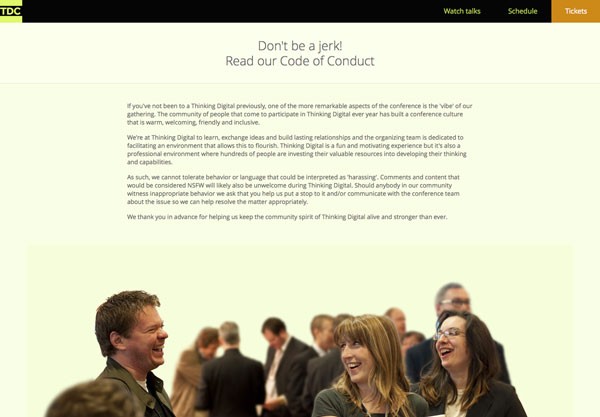
2. Events
With the rise of millions of tech communities and groups around the world, more and more of us have a little bit of power: as an event organiser.
Event organisers aren't powerful, you might argue. But they are. It is they who invite speakers, facilitate discussions and seek sponsors.
So if you're organising an event (or helping to), make sure your event doesn't unintentionally make women feel excluded or less valued.
Speakers
An obvious way to make events more diverse is by having a diverse range of speakers. This is getting better over time in many sectors of the industry: at my first WordCamp in 2010 there wasn't a single women speaking, in 2011 there was one (me), and by 2014 the main room on the first day had only one male speaker. But other events can be far less representative.
If you're struggling to find women to speak at your event, change the way you find speakers. Don't rely on asking those people who've spoken before or whom you know personally: invite applications to speak and publicise this widely. Not only does this enhance diversity, it will also introduce new speakers and fresh thinking to your event, and make it more interesting. Speakers don't have to be the well known 'experts' that everyone's heard of: there are plenty of other people out there with fascinating stories or ideas to share and your event will be better if you include them.
If you have a panel element to your event, make sure it doesn't entirely consist of men. Even if you only have one woman speaking at your event, make sure she's on that panel. It may feel like tokenism but it will encourage other women to come forward and be on that panel next time.
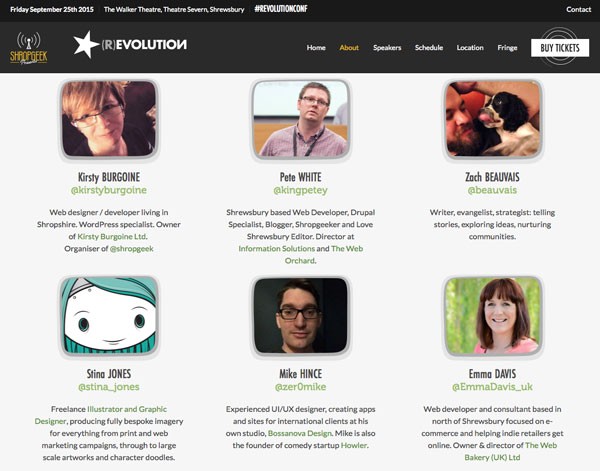
T-shirts and Swag
This is a personal bug-bear of mine. T-shirts which manufacturers label as unisex aren't: they don't look good on many women. If you're giving out T-shirts as part of your swag, make sure you include women's sizes, and make that obvious when asking people for their size at registration (a woman thinking the sizes are 'unisex' - i.e. men's - will tend to go for a smaller size than she would if she knew the T-shirts were sized for women).
This may seem minor but it sends out a message to women attending the event that they're welcome and makes them feel more comfortable wearing the T-shirt during and after the event, which will boost the number of people seeing your branding.
Marketing
The way you promote and market an event will have an impact on the type of people who attend, and if you want your delegates to come from more diverse backgrounds, then your promotion will need to diversify.
If your delegates are overwhelmingly male, try to expand your advertising or marketing efforts.
Talk to those women that do attend and ask them for suggestions as to where your event could be promoted. Get them to spread the word among their networks. Go to women's events and tell them about your event.
Don't rely on message boards and forums, which will be dominated by the same die-hards who come along every year—make use of Twitter, meetup.com and Lanyrd to reach a wider audience.
Once you have your diverse speaker line-up in place, make sure potential attendees know about it. Publish interviews with your speakers both male and female and make sure the female speakers aren't listed at the bottom of your lineup.
For more information on increasing diversity at your conference read this article by Ashe Dryden.
3. Education
This is a biggie. The figure I quoted at the beginning of this article indicates that less than 1% of those girls with an interest in STEM subjects at high school are going on to do a Computer Science degree. Of course there will be girls going on to do other STEM subjects, but it is a problem.
So if you're involved in educating kids and young people, you can help to encourage girls and make them feel that the tech industry is the place for them.
Teachers
The place where most kids and young people will have the greatest experience of working with ICT is in the classroom. It's at an early age that children begin to develop preferences for using ICT as a tool (word processing etc.) or as a technology (coding etc.).
Take every opportunity to showcase the work of high achieving kids (boys and girls) to other students, and make sure that girls are high profile among the students who are seen as talented users of technology.
If you're helping students make subject choices, you will help girls by doing everything you can to open their eyes to the possibilities offered by studying more technical subjects. After all, research has shown that girls who study STEM subjects go on to earn a third more than their counterparts who stick to other subjects. Ensure that photos, posters and other materials promoting technical subjects in your school include images of girls and of activities which will appeal to girls as well as boys.
In an interview for the Virgin website, Stemettes founder Anne-Marie Imafidon said:
I think there needs to be education on what the jobs are in STEM and how much they pay and that they are places for women, and not just for women who don't mind wearing hardhats and getting dirty.
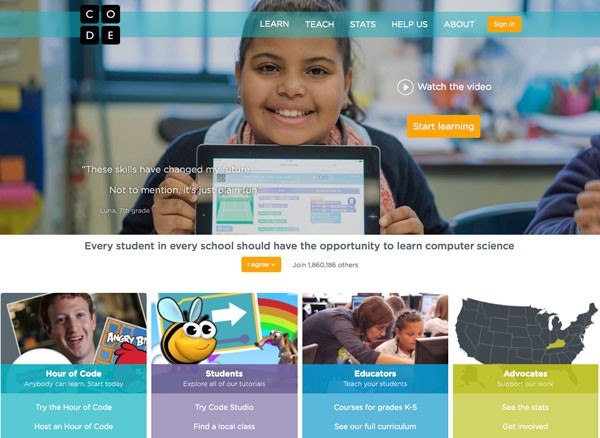
Volunteers
There's a growing number of volunteers running groups like Code Clubs and Coder Dojos. Some of these take place inside schools and some outside.
In my experience of running a Code Club for 9-11 year olds, there's no difference in the level of interest from girls and boys: in fact last year, my club had more girls than boys. But as students get older this tends to change: I've attended events run by organisations like the BBC and Young Rewired State and among the high school age students, boys dominate.
If you're running a club and not many girls are taking an interest, try actively going out and encouraging girls to get involved. Talk to the girls in your school or community and get them to talk to each other. Find out what coding projects would engage them and make sure that when you're setting tasks, they are appealing to girls and boys.
An approach which works just as well for girls and boys is to let them design their own projects. I regularly do this in my Code Club and I also encourage boys and girls to work together in designing projects, which gives their work some balance. Otherwise the all-boy groups tend to design zombie games and the all-girl groups will create virtual nature trails—all equally valid!
When choosing projects and tasks, don't just focus on the technologies you're using: think about solving problems too. Ruth Nicholls from Young Rewired State has plenty of experience working with boys and girls, and told me:
Girls tend to be naturally sociable and like to do things in groups. We focus on collaborative, project-based work, and make it as relevant as possible, so that young people are solving real-world problems rather than simply coding for its own sake. Coding isn't just an abstract mathematical puzzle: it's about building creative solutions which become part of our lives.

4. Imagery
It can be hard to find images relating to the tech industry that aren't dominated by men. But by continuing to use those images we perpetuate an idea that the tech industry isn't a place for women and put many of them off getting a technical education or applying for jobs.
If you run a tech website, from your own personal blog through to a company website, make sure the images you use are diverse. But don't resort to corny stock photos: that won't help anyone.
Instead, make sure when you and your colleagues are taking photos of events or teams, that women are included where possible. Even if there were only 10% women at your tech event, putting a photo with them on the front page of your site for next year's event will show the world that this is a women-friendly space and encourage women to come. Next year you'll find it easier to take photos with women in!
Images are also important in education. Using images of women in tech careers doesn't put boys off pursuing those subjects, but it does encourage girls (the same works with photos of men in stereotypically female jobs like nursing). If you're responsible for sourcing books on technical subjects for your students, try to choose ones with women as well as men featured in them. Make sure your students are aware of the women who've made significant contributions to technology and are high profile members of the industry.
5. Recruitment
There are adaptations you can make to your hiring practices which will encourage more women to apply.
These come under three broad headings:
- Language and job descriptions: review the language you use in job titles and adverts and check whether they're traditionally masculine or feminine words. Could 'strong' be replaced by 'excellent', for example?
- Be transparent about your company's record on diversity. Big firms like Apple, Google and the BBC as well as smaller companies like Buffer publish their diversity data and are not afraid about the fact that this shows they aren't perfect. Instead it shows that they are working on this issue and want to be more diverse.
- Do outreach work. Sponsor tech events aimed at women and girls and get involved in them. Go out there and find the talent.
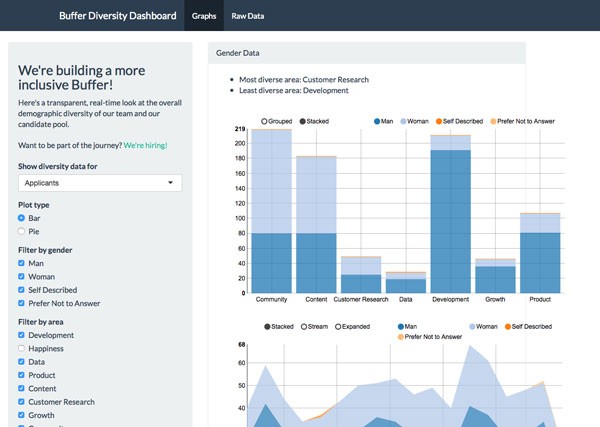
The BBC engages in outreach work as an important part of its remit as a public service broadcaster and also to increase the talent pool available to it. Huw Davies, who manages Engineering programmes, says:
In a tech savvy world engineering isn’t necessarily the domain of factory floors. BBC Engineering frequently attends Skills Shows and educational recruitment fairs as much to reach out to all youngsters but also to educate teachers in the variety of career paths available to those scientific and mathematical stars of the future.
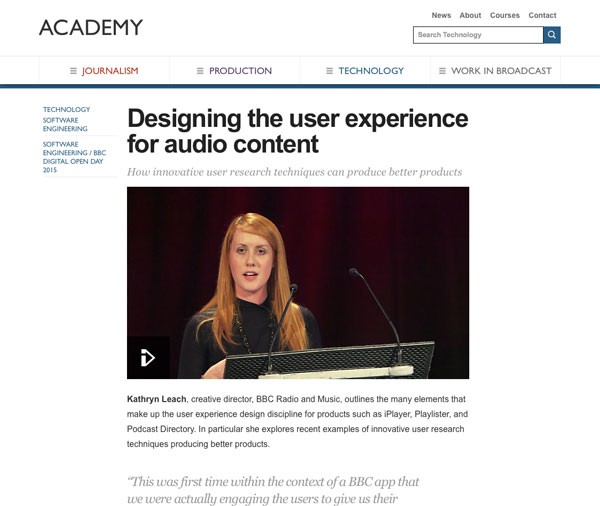
For more information on recruitment and gender diversity, see the Hire More Women in Tech website.
Summary
Increasing women's representation in the tech industry isn't just the responsibility of geeky women: everyone involved with the industry can play a part in making things more inclusive and ensuring that both women and men feel that the tech industry is their natural home.
Whether you're a recruiter, an event organiser, a teacher or mentor, or if you're just someone who mixes with other people in the industry, hopefully the tips above will help you make a contribution.


Comments